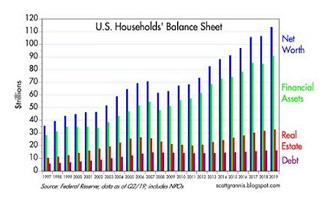eResearch> Not much change this past week in terms of yield Spreads. Interest rates dropped in both the USA and Canada, while the yield curve Spread declined in the USA but rose in Canada. The rise in Canada from 0.01x to 0.05x in the 10-year/2-year Spread on Friday likely reflected the drop on Thursday evening in five-year conventional mortgage rates by the Bank of Canada for the first time since August 2016.
The U.S. Reading of the Recession Barometer was unchanged this past week at 7.5x. A Reading of 10.0x denotes an Inversion, at which point a Count-Down to an Economic Recession begins. This does not seem likely in the short-term.
In Canada, two of our monitored metrics are inverted (10-year/3-month and 5-year/2-year) but the third and most important metric (10-year/2-year) remains in positive territory.
It is puzzling why the U.S. 10/2 Spread is 0.25x at a time when the U.S. economy seems to be struggling a bit, whereas the Canadian 10/2 Spread is 0.05x (and was actually inverted for 7 consecutive days recently) at a time when the Canadian economy is believed to be showing some strength. It is possible that the U.S. economy is viewed as struggling because many of the economic indicators have reached levels not achieved in many years, and there is probably not much more improvement left. For example, U.S. unemployment is at 3.8% at the end of May and could reach 3.6% at the end of June. However, the average rate in 2020 is forecast at 4.1%.
In the meantime, North American stock market indexes seem oblivious to recessionary fears as they trade near all-time highs.
You can access this week’s Recession Barometer report here: … RB_071919





